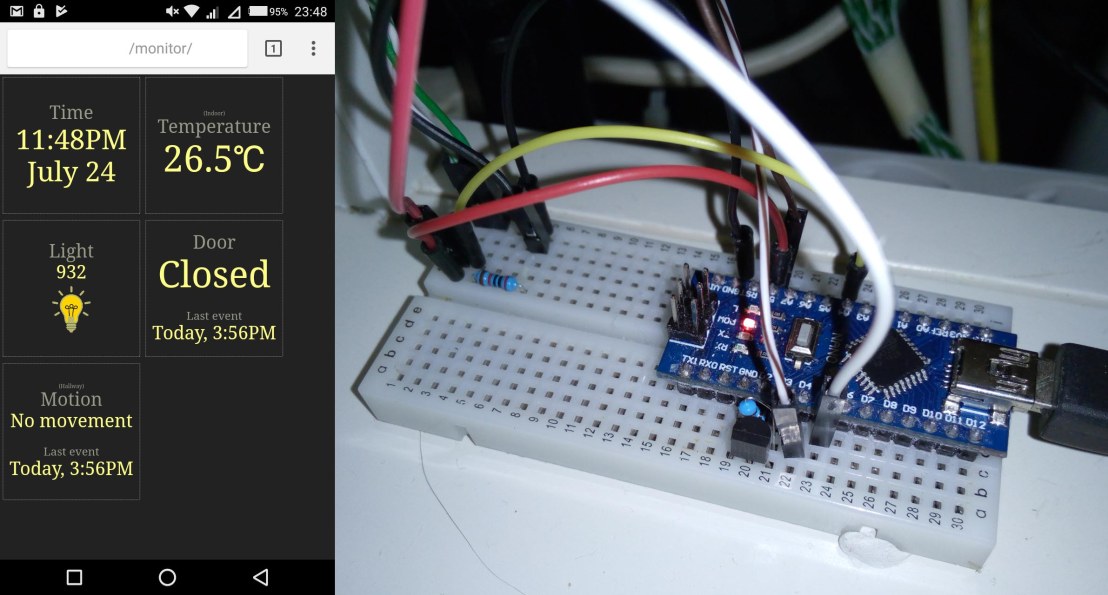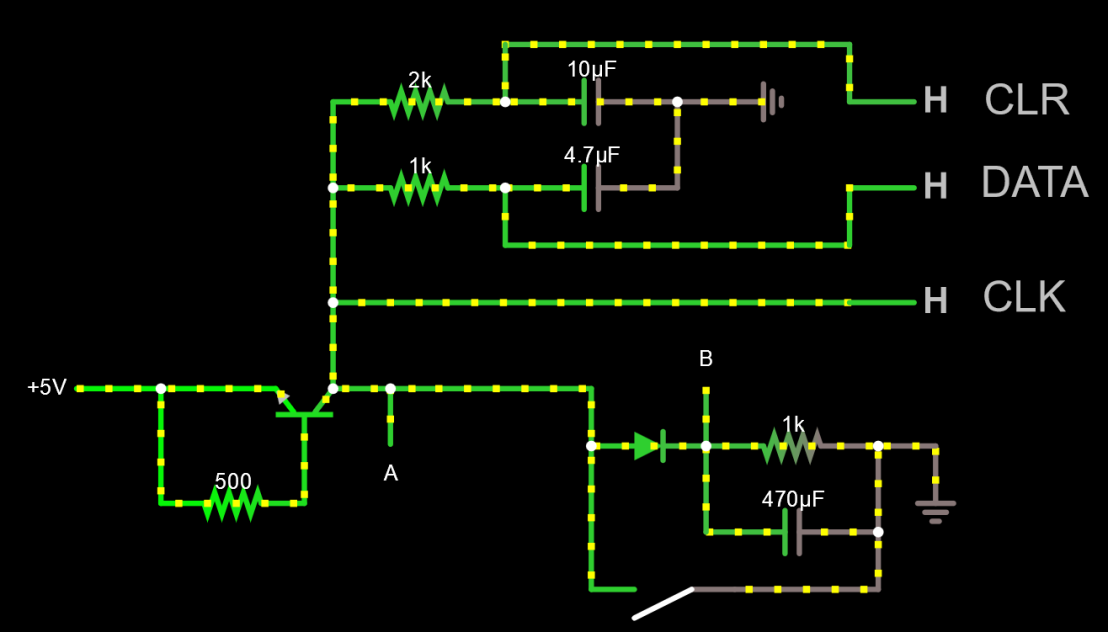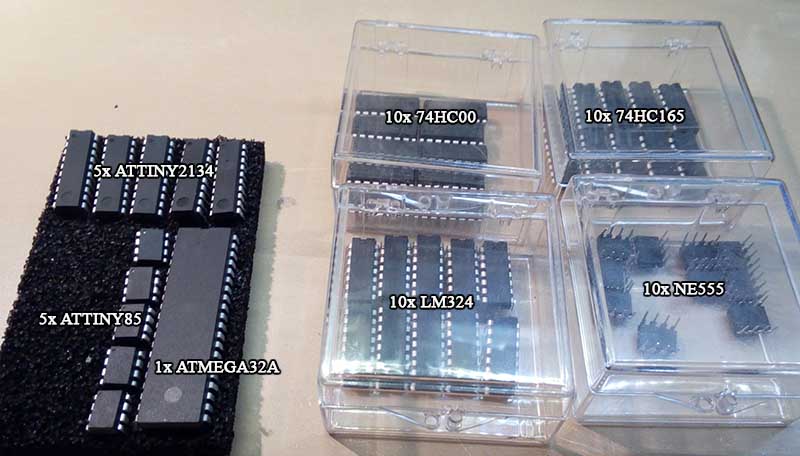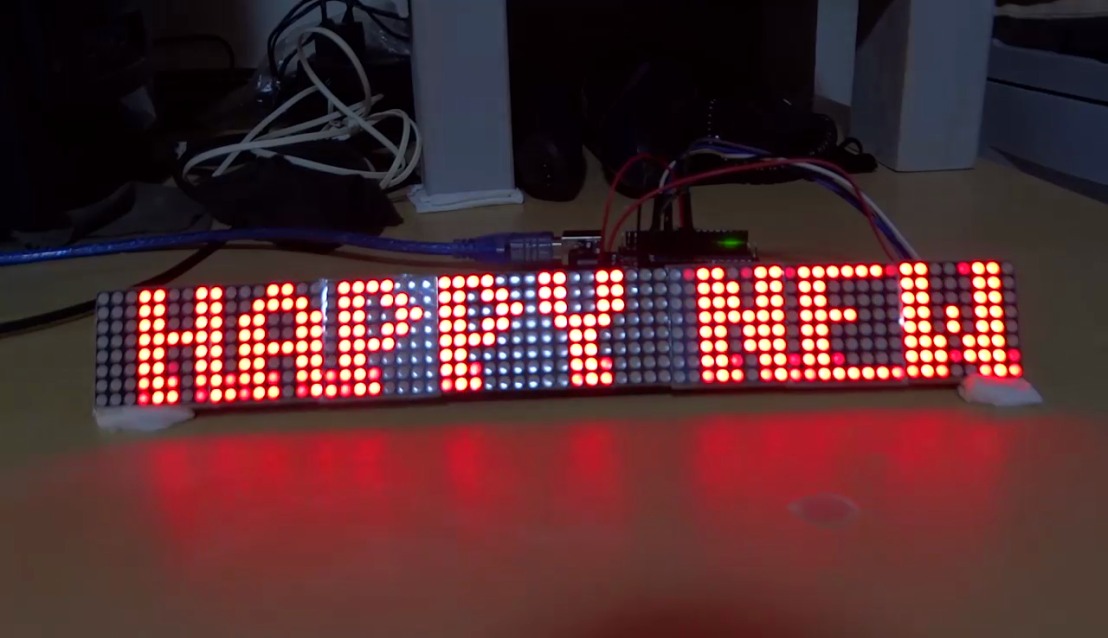For some time now my house monitor circuit has been working and logging data as well as providing a web interface where the current status of the sensors can be seen. Not that many sensors right now but;
- Door sensor. Simple aluminium foil pads in the doorframe wired such that if the door is closed, the input pin is directly connected to ground. If the door opens, the connection is broken and through a 5k resistor, the pin is pulled up to +5V.
- Motion sensor pointed at my hallway and door. To see when people come and go, as well as seeing when I visit the toilet and such… there is no such thing as too much information…
- Photoresistor underneath my desk lamp. Any time Im at my desk, my desk lamp is lit, so its an indication of wether Im at my desk or not.
- Dallas 18B20 temperature sensor. Next to my desk (but one shelf up above a server so its constantly reading a bit hotter than the rest of the room).
In the future I hope to expand the system with wires to my window for reading outside temperature and light.
And I have to work on making graphs for trends over the course of a day, month or year for temperature and light sensor readings.



